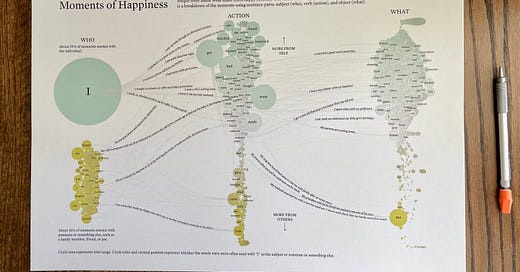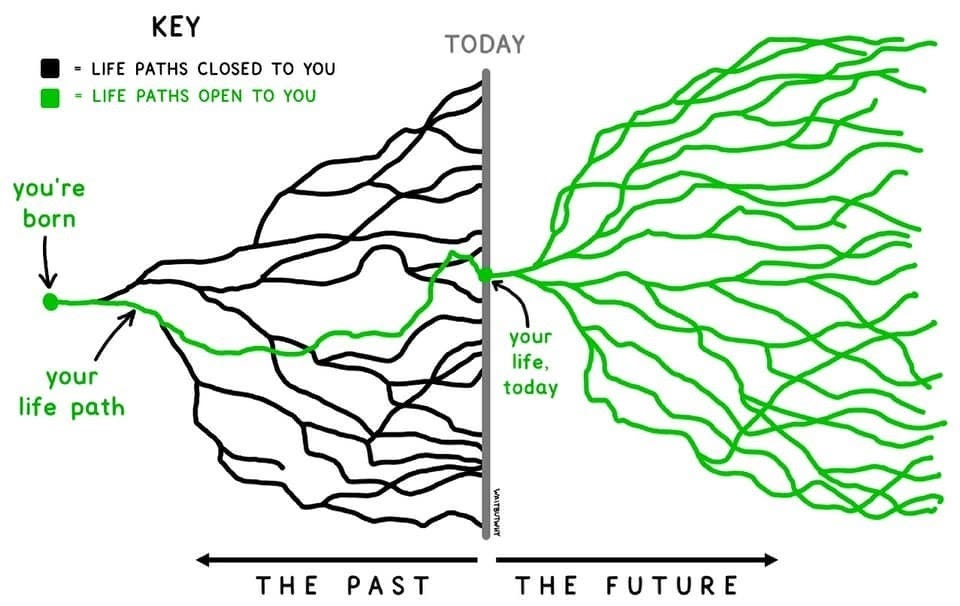A very Happy Diwali to all of you!
In a mix of work and family time, I struggled to read something new. So, I took the easy way out, and revisited some of my older posts. Today’s curation is my favourite from those from the early days of this newsletter. I hope you will enjoy it. I will be back with regular posts from the coming Monday.
And with that, let’s get started with today's post.
Here’s the opening from #10
‘In many ways, the work of a critic is easy. We risk very little, yet enjoy a position over those who offer up their work and their selves to our judgment. We thrive on negative criticism, which is fun to write and to read. But the bitter truth we critics must face, is that in the grand scheme of things, the average piece of junk is probably more meaningful than our criticism designating it so. But there are times when a critic truly risks something, and that is in the discovery and defense of the *new*. The world is often unkind to new talent, new creations. The new needs friends.’
Anton Ego offers a remarkable hidden aspect of a critic’s duties to her art. She can act to play God, or give her best to show the mirror to the world. It’s not an easy job if you want to do it with full earnestness. Be a good critic. The world needs more of you.
And below are the discoveries that I find worth re-sharing.
1. High Standards
In his 2017 letter to shareholders, Jeff Bezos shared his thoughts on high standards. In his signature style, he covered 'what', 'why' and 'hows' in this update. His reference to how amazon has built a culture of high standards makes it easy to relate to those inputs. I am reproducing some portions from the post as-is for your reference.
First, there’s a foundational question: are high standards intrinsic or teachable? ... I believe high standards are teachable. In fact, people are pretty good at learning high standards simply through exposure. High standards are contagious. Bring a new person onto a high standards team, and they’ll quickly adapt. The opposite is also true. If low standards prevail, those too will quickly spread. And though exposure works well to teach high standards, I believe you can accelerate that rate of learning by articulating a few core principles of high standards…
He goes further to define…
What do you need to achieve high standards in a particular domain area? First, you have to be able to recognize what good looks like in that domain. Second, you must have realistic expectations for how hard it should be (how much work it will take) to achieve that result – the scope.
And finally, he shares the Benefits of High Standards ….
you’re going to build better products and services for customers – this would be reason enough! Perhaps a little less obvious: people are drawn to high standards – they help with recruiting and retention. More subtle: a culture of high standards is protective of all the “invisible” but crucial work that goes on in every company. I’m talking about the work that no one sees. The work that gets done when no one is watching. In a high standards culture, doing that work well is its own reward – it’s part of what it means to be a professional.
And finally, high standards are fun! Once you’ve tasted high standards, there’s no going back.
The part about “invisible” but crucial work is such a powerful articulation. It's so true if you’re a custodian of anything - quality, customer experience, culture, cost. A lot of your energy goes into working on countless ‘never to be seen’ tasks. Tasks that no one notices, but are the real ingredients for the ultimate magic. Your passion is the only thing that can keep you going in such a role. Set high standards high and keep doing - those are the rules of the game for you.
(Featured in #27)
2. Rigorous Thinking
Wes Kao defines rigorous thinking as “thinking as asking critical questions about tactics, and having a systematic way of making decisions”.
She suggests leaders use this to make their team smarter and sharper at whatever they do. She shares some questions that encourage rigorous thinking. Here're some of the useful ones:
“This is a great start. How do you see this working?”
“Who is this for?”
“What's the hard part?”
“What would success look like?”
“What constraints are we working within?"
“If we decided to move forward with this today, what would you need to make it happen?”
As you notice, this approach is a fair play of the Socratic method. It needs patience and a lot of practice before you start getting the desired result. But like any other skill-building, the impact can be long-lasting.
Next time when a team member proposes a new idea, see if sharing just tactical feedback is the right choice. You might want to invest in building better decision making.
(Featured in #20)
3. The Mom Test
The Mom Test is a must-read if you are building anything. To build stellar products & memorable experiences, talking to a customer is critical. It sounds easy. And we all believe that anybody can do it. This book shows how wrong this assumption can be. It, also, shows how to do it right. Here’s the opening of the book that summarizes this pretty well.
“Trying to learn from customer conversations is like excavating a delicate archaeological site. The truth is down there somewhere, but it’s fragile. While each blow with your shovel gets you closer to the truth, you’re liable to smash it into a million little pieces if you use too blunt an instrument.”
I’ve summarized the first two chapters here. For the rest, do read the book. It’s a very small read and will be worth every minute of your time.
(Featured in #4)
4. Observation & inquiry
In “the power of product thinking”, Julie Zhuo talks about the two most important habits of a product thinker - observation and inquiry. What’s product thinking, you may ask? In her words, ‘it is the skill of knowing what makes a product useful — and loved — by people.’
Product thinker or not, these two habits are very critical for any creator or builder. It differentiates them from those who are doers. Observation is the fuel for creating awareness, curiosity helps translate that into insights. If you are passionate about creating something meaningful, do add these two to your recipe.
Again, if you have those two habits, I highly respect you. In my interviews, I like to check for 'Having a fun project' and 'having observations & inquiry'. I did not realize it, but these have influenced my hiring a lot. And I must say that it has helped me find & bring together some of the most talented folks in this group or outside.
(Featured in #8)
5. How to manage your work?
In this post, Tiago Forte takes inspiration from Mise-en-Place practice of the culinary world to share 6 useful lessons for us - the knowledge workers.
Sequence: The first thing we do at the start of our workday sets the tone for everything that follows. Our TODOs and planning rhythms should enable us to get a great start every day.
Placeholders: Create an environment that helps us 'remember' things for us. Our notes, checklists, task lists help ease the mental overload and let us focus on the important.
Immersive vs Processing time: Create leverage by smartly investing in your processing time. The small actions we take to kick off process time unlock the efforts of others on our behalf.
Finishing mindset: Free up your mental & physical space by tieing up all open threads. Don't leave 'orphaned tasks'. Context switching is expensive, even more so when you don't enable an easy re-start later.
Small, precise movements: Break down the repeated, habitual actions we take every day. This will enable consistent output & make the work more enjoyable.
Arrangement: Create a “start up” and “wind down” routine to begin and end your day predictably. This will help define the balance between work & life.
If you want to know more about Mise-en-place, below is a quick snapshot from the article. Do read the original article to enjoy the beauty of this system.
(Featured in #9)
6. Happiness
Happiness comes in many forms, from many places, and through many paths. Sometimes you have to refocus your attention to see the moments more clearly. This infographic takes a shot at explaining this simple notion in a beautiful way. If you love beautiful graphs, you are going to love this one.
(Featured in #14)
7. Everything else
Some random goodness from the internet:
Street Lights from all over Japan (from #1)
An oral history of ‘Dil Chahta Hai’ (from #6)
A day in the life of a 21-year-old, who lives in a 72 sq ft NYC apartment. She pays just $1345 pm for this! (from #14)
So I asked them to smile - a beautiful reminder of the joy we can all spread. (from #15)
6 word stories (from #18)
Dan Lewis’s “Now I know” is a great example of what curiosity can help you achieve. (from #24)
Before we sign off, here's a message worth revisiting everyday. Thanks Tim Urban
We think a lot about those black lines, forgetting that it’s all still in our hands.
That's all for this week, folks!
If you enjoyed this post, show your love by commenting and liking it. I write this newsletter to share what I learnt from others. If you learnt something from this today, why not share it with a couple of your friends to continue this chain?





